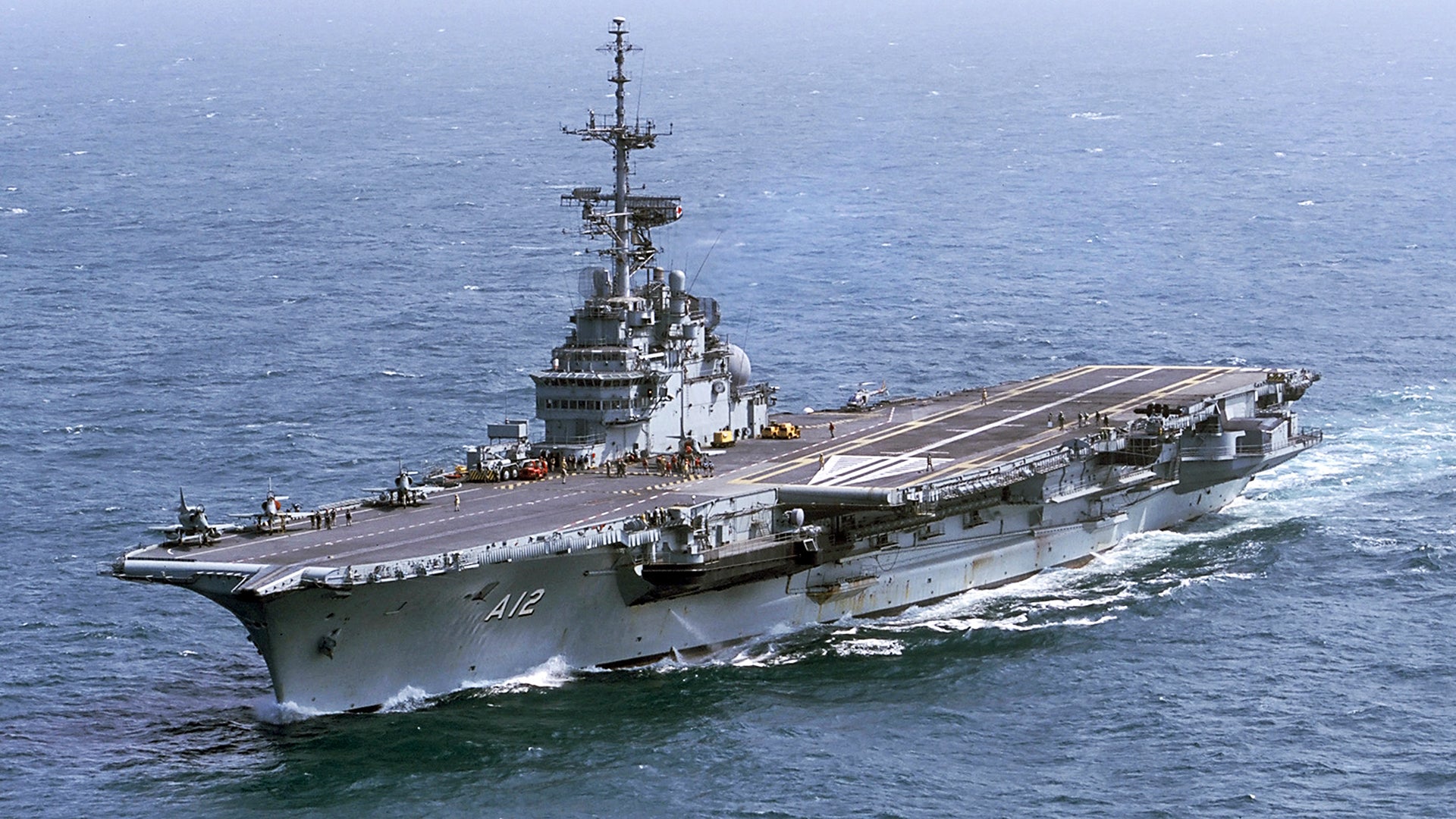The fate of Brazil’s only aircraft carrier, the French-built Foch, which has carried the name NAe São Paulo since first flying the Brazilian flag in 2000, has been in limbo for over a decade. Now it has finally been announced that the Brazilian Navy has decided to decommission the vessel instead of refitting it for extended service as they had promised on and off over the last decade.
The 55-year-old ship is in need of massive repairs—especially to its boilers and catapults—to accommodate Brazil’s handful of recently upgraded A-4 (local designation: AF-1) Skyhawks operationally again. You can read all about the ship and these unique jets here. But after years of inspections, cost estimates and maintenance deferrals, São Paulo will not get the deep refit it desperately needs. Instead, it will be decommissioned within the next three years.
In the end, it was a matter of priorities. The ship supposedly needs ten years of work, and piles of cash to pay for it. By that time it will be questionable if Brazil will even have aircraft that are capable of flying off its decks. Most importantly, the Brazilian Navy has downgraded fixed-wing aircraft carrier capability to its third most pressing priority, after fielding a nuclear submarine and more corvettes.
With Brazil’s economy still in tatters, it is unclear when, or how the Brazilian Navy intends to go about making their carrier replacement wishes a reality once the São Paulo is officially decommissioned. The truth is that under the current circumstances being the Navy’s third priority is likely not a realistic priority at all at this point.
São Paulo sailing by Rio’s Sugar Loaf Mountain during better days (AP photo):

Building a new carrier from scratch would be a monumental undertaking, both technologically and fiscally, with a questionable strategic return on investment. Buying a secondhand carrier capable of operating their Skyhawks, or even a future naval fighter like a navalized JAS-39E Gripen, is problematic simply because none will be available for the foreseeable future. Plus, all the remaining carriers capable of fielding Brazil’s Skyhawks run on nuclear propulsion.
With this decision, the world is left with only two catapult assisted takeoff and barrier assisted recovery (CATOBAR) configured aircraft carrier operators. With the F-35B coming online, the wealthiest nations that are also allies of the US will be able to retain a CATOBAR-like capability without the high cost of a carrier configured for such operations. But aside from the possibility of purchasing second-hand AV-8B Harriers from the US in the coming decade, the fixed-wing carrier club will be increasingly exclusive, at least for the near future. China and India are both working on developing CATOBAR capabilities, but it will be years before these new vessels will be in operation.
A Brazilian Navy AF-1 executing cross-deck operations with the USS Ronald Reagan in 2004 (US Navy photo):

Brazil still intends to keep its dwindling force of upgraded A-4 Skyhawks flying and may even get their pilots shipboard experience by training abroad, with the US and France being their only possible partners in such an endeavour.
Although it’s sad to see a capability that was totally unique to the region—and somewhat of a time capsule of ‘60 era naval aviation—go away, Brazil is making the right choices during hard times when it comes to putting their Navy’s dollars where they can make the most impact. Still, it is a hard hit for Brazil’s Navy who has prided itself on being one of the last vestiges of traditional carrier-based naval aviation.
Contact the author: Tyler@thedrive.com
